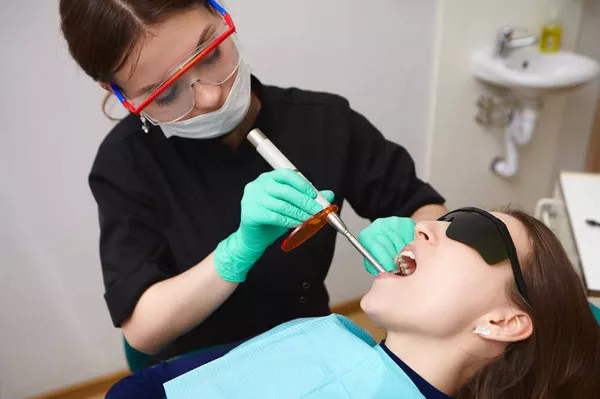Wisdom teeth removal is a common dental procedure, and the recovery period often comes with dietary restrictions to ensure optimal healing. Sushi, a beloved and diverse dish, raises questions about its compatibility with the post-operative phase. In this comprehensive guide, we will delve into the factors influencing when it’s safe to enjoy sushi after wisdom teeth removal.
Understanding the Initial Recovery Stage
Follow Professional Advice:
Your oral surgeon or dentist will provide specific post-operative instructions, including dietary guidelines. It is crucial to adhere to these recommendations to facilitate proper healing and reduce the risk of complications.
Soft Diet Emphasis:
The immediate days following wisdom teeth removal often necessitate a soft diet to avoid irritation to the surgical sites. Soft foods such as yogurt, mashed potatoes, and smoothies are typically recommended during this initial phase.
Why Sushi May Pose Challenges Initially
Chewing Challenges:
Sushi often involves chewing, and the rice can be sticky, potentially posing challenges during the early days of recovery when the surgical sites are sensitive.
Avoiding Disruption of Blood Clot:
Consuming foods that require extensive chewing, like sushi, may increase the risk of disrupting the blood clot that forms in the extraction sites. Protecting this clot is crucial for proper healing.
Gradual Introduction of Solid Foods
Consult with Your Dentist:
Before reintroducing solid foods like sushi into your diet, consult with your dentist or oral surgeon. They can assess your healing progress and provide personalized advice based on your specific case.
Wait for Indicators of Healing:
Patience is key. Wait until you experience significant healing, a reduction in swelling, and minimal pain before considering the reintroduction of solid and potentially challenging foods like sushi.
Factors Influencing the Timeline
Individual Healing Variations:
The rate at which individuals heal can vary. Age, overall health, and adherence to post-operative care instructions all play a role in determining when it is safe to reintroduce foods like sushi.
Complexity of Extraction:
The complexity of the extraction procedure can influence the recovery timeline. If the extraction involved multiple teeth, impacted wisdom teeth, or other complications, a more extended soft diet period may be recommended.
Indicators that You Can Consider Sushi
Decreased Swelling:
Wait until any swelling or inflammation has significantly decreased. Introducing challenging foods too early may exacerbate these symptoms and hinder the healing process.
Minimal to No Pain:
If you experience minimal to no pain and discomfort, it may indicate that the healing process is progressing well. However, always consult with your dentist before reintroducing challenging foods like sushi.
How to Safely Enjoy Sushi After Wisdom Teeth Removal
Choose Soft Options:
Opt for sushi options that are softer and easier to chew, such as sushi rolls with cooked ingredients, avocado, or cucumber. Avoid rolls with large, crunchy elements that may pose challenges during the early stages of recovery.
Cut into Smaller Pieces:
To minimize the effort required for chewing, cut your sushi into smaller, more manageable pieces. This reduces the strain on the surgical sites and decreases the risk of irritation.
Alternative Nutrient Sources During Initial Recovery
Soft, Nutrient-Rich Options:
While avoiding challenging foods, focus on incorporating nutrient-rich soft foods into your diet. Avocado, fish that flakes easily, and seaweed salad are excellent alternatives that provide essential nutrients without the potential for irritation.
Maintain Hydration:
Stay adequately hydrated to support the healing process. Water-rich foods like watermelon and cucumber can contribute to hydration while being gentle on the surgical sites.
Monitoring for Signs of Discomfort or Complications
Listen to Your Body:
Pay close attention to how your body responds when you start reintroducing solid foods. If you experience any discomfort, pain, or signs of irritation, it may be an indication to temporarily avoid challenging foods and consult with your dentist.
Address Issues Promptly:
If you notice any complications, such as increased pain, swelling, or concerns about the surgical sites, contact your dentist promptly. Timely intervention can help prevent further issues and ensure a smooth recovery.
Conclusion
Enjoying sushi after wisdom teeth removal requires a cautious and gradual approach. It is crucial to prioritize soft foods during the initial recovery phase to promote healing and minimize the risk of complications. Factors such as individual healing speed, the complexity of the extraction, and the absence of pain and swelling play a role in determining when sushi can be safely incorporated back into your diet.
Before making any dietary changes, always consult with your dentist or oral surgeon for personalized advice. They can assess your specific case and provide guidance on the optimal timeline for reintroducing challenging foods like sushi. Remember that each person’s recovery is unique, and a patient approach ensures the best outcome for your oral health.
When Can I Eat Nuts After Wisdom Teeth Removal
How To Care After Wisdom Tooth Extraction
What Not To Do After Wisdom Teeth Removal






























